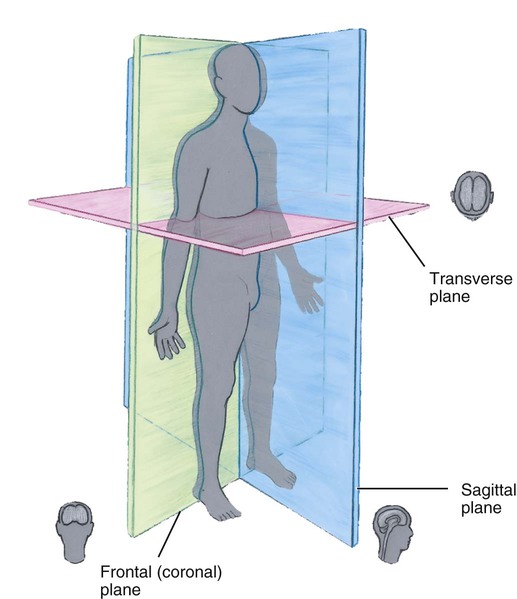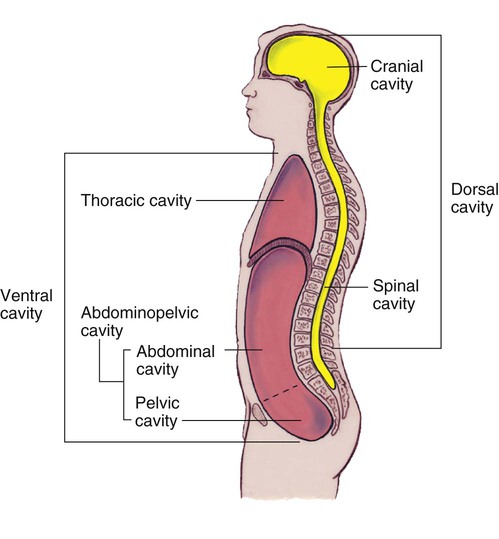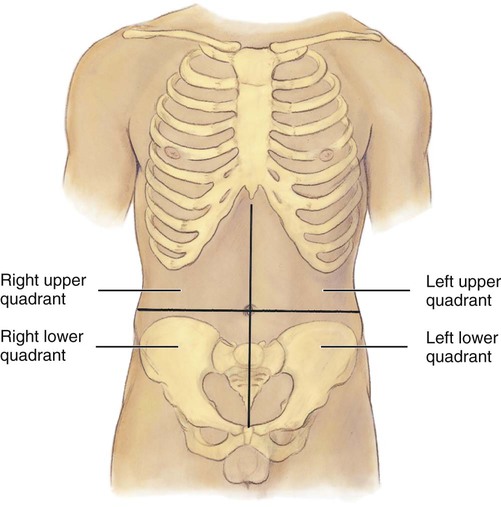1. Explain why it is important for the medical assistant to be knowledgeable about anatomy and physiology. 2. Explain the relationship between anatomy and physiology. 3. State the six levels of organization within the human body. 4. List the 11 organ systems of the body, and describe the function of each. 5. Describe homeostasis and its importance to the human body. 6. Explain how the body maintains homeostasis using a negative feedback system. 7. List the four criteria used to describe the anatomic position. 8. Identify body planes, body regions, and relative positions using anatomic terms. 9. Distinguish between the dorsal body cavity and the ventral body cavity, and list the subdivisions of each cavity. 10. Describe the cell membrane. 11. Describe the composition of the cytoplasm. 12. Describe the components of the nucleus, and state the function of each component. 13. Identify and describe each of the cytoplasmic organelles, and state the function of each organelle. 14. Explain how the cell membrane regulates the composition of the cytoplasm. 15. Describe the various mechanisms that result in the transport of substances across the cell membrane. 16. List the phases of a cell cycle, and describe the events that occur in each phase. 17. Explain the difference between mitosis and meiosis. 18. List the four main types of tissues found in the body. 19. Describe the various types of epithelial tissues in terms of structure, location, and function. 20. Describe the general characteristics of connective tissue. 21. List three types of connective tissue cells, and state the function of each. 22. Describe the features and location of the various types of connective tissue. 23. Explain the differences among skeletal muscle, smooth muscle, and cardiac muscle in terms of structure, location, and control. 24. State the two categories of cells in nerve tissue, and explain their function. The human body has 11 major organ systems, each with specific functions, yet all are interrelated and work together to sustain life. Each system is described briefly here and then in more detail in later chapters. The organ systems are illustrated and summarized in Table 5-1. Table 5-1 From Applegate E: The anatomy and physiology learning system, ed 4, St Louis, 2011, Saunders. If directional terms are to be meaningful, there must be some knowledge of the beginning position. If you give a person directions to go somewhere, you must have a starting reference point. When using directions in anatomy and physiology, it is assumed that the body is in anatomic position. In this position, the body is standing erect, the face is forward, and the arms are at the sides with the palms and toes directed forward. Figure 5-2 illustrates the body in anatomic position. Superior means that a part is above another part, or closer to the head. The nose is superior to the mouth. Inferior means that a part is below another part, or closer to the feet. The heart is inferior to the neck. Anterior (or ventral) means toward the front surface. The heart is anterior to the vertebral column. Posterior means that a part is toward the back. The heart is posterior to the sternum. Medial means toward, or nearer, the midline of the body. The nose is medial to the ears. Lateral means toward, or nearer, the side, away from the midline. The ears are lateral to the eyes. Proximal means that a part is closer to a point of attachment, or closer to the trunk of the body, than another part. The elbow is proximal to the wrist. The opposite of proximal is distal, which means that a part is farther away from a point of attachment than is another part. The fingers are distal to the wrist. Superficial means that a part is located on or near the surface. The superficial (or outermost) layer of the skin is the epidermis. The opposite of superficial is deep, which means that a part is away from the surface. Muscles are deep to the skin. Visceral pertains to internal organs or the covering of the organs. The visceral pericardium covers the heart. Parietal refers to the wall of a body cavity. The parietal peritoneum lines the wall of the abdominal cavity. To aid in visualizing the spatial relationships of internal body parts, anatomists use three imaginary planes, each of which is cut through the body in a different direction. Figure 5-3 illustrates these three planes. The sagittal plane refers to a lengthwise cut that divides the body into right and left portions. This is sometimes called a longitudinal section. If the cut passes through the midline of the body, it is called a midsagittal plane, and it divides the body into right and left halves. The transverse plane or horizontal plane is perpendicular to the sagittal plane and cuts across the body horizontally to divide it into superior and inferior portions. Sections cut this way are sometimes called cross sections. The frontal plane divides the body into anterior and posterior portions. It is perpendicular to both the sagittal plane and the transverse plane. This is sometimes called a coronal plane. Spaces within the body that contain the internal organs or viscera are called body cavities. The two main cavities are the dorsal cavity and the larger ventral cavity, which are illustrated in Figure 5-4. The dorsal cavity is divided into the cranial cavity, which contains the brain, and the spinal cavity, which contains the spinal cord. The cranial and spinal cavities join with each other to form a continuous space. To help describe the location of body organs or pain, health care professionals frequently divide the abdominopelvic cavity into regions using imaginary lines. One such method uses the midsagittal plane and a transverse plane that passes through the umbilicus. This divides the abdominopelvic area into four quadrants, illustrated in Figure 5-5. Another system uses two sagittal planes and two transverse planes to divide the abdominopelvic area into the nine regions illustrated in Figure 5-6. The three central regions are, from superior to inferior, the epigastric (ep-ih-GAS-trik), umbilical (um-BIL-ih-kal), and hypogastric (hye-poh-GAS-trik) regions. Lateral to these, from superior to inferior, are the right and left hypochondriac (hye-poh-KAHN-dree-ak), right and left lumbar, and right and left iliac (ILL-ee-ak) or inguinal (IN-gwih-nal) regions. The body may be divided into the axial (AK-see-al) portion, which consists of the head, neck, and trunk, and the appendicular (ap-pen-DIK-yoo-lar) portion, which consists of the limbs. The trunk, or torso, includes the thorax, abdomen, and pelvis. In addition to these terms and the nine abdominopelvic regions identified in the previous section, there are numerous other terms that apply to specific body areas. Some of these are listed in Table 5-2 and are identified in Figure 5-7. Table 5-2 From Applegate E: The anatomy and physiology learning system, ed 4, St Louis, 2011, Saunders.
Introduction to Anatomy and Physiology
The Human Body
Organ Systems
Integumentary System
Skeletal System
Muscular System
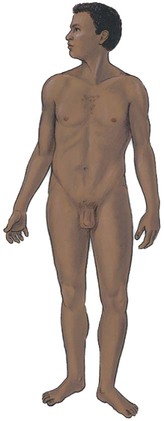
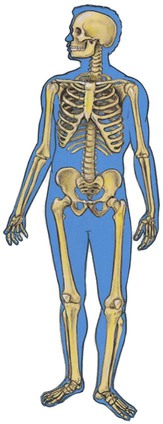
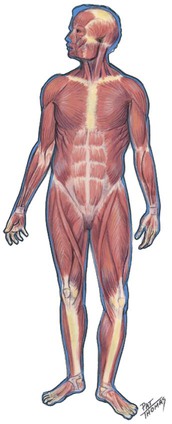
COMPONENTS: Skin, hair, nails, sweat, sebaceous glands
COMPONENTS: Bones, cartilage, ligaments
COMPONENTS: Muscles
FUNCTIONS: Covers and protects body; regulates temperature
FUNCTIONS: Provides body framework and support; protects; attaches muscles to bones; provides calcium storage
FUNCTIONS: Produces movement; maintains posture; provides heat
Nervous System
Endocrine System
Cardiovascular System
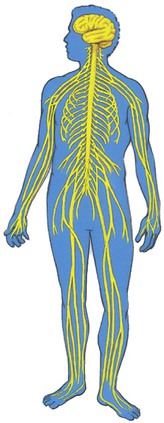
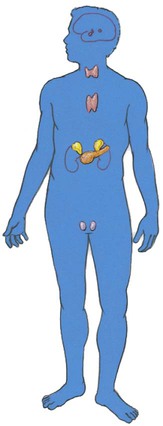
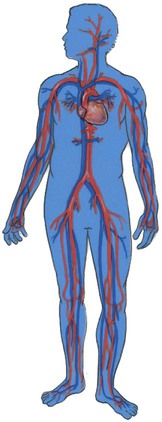
COMPONENTS: Brain, spinal cord, nerves, sense receptors
COMPONENTS: Pituitary, adrenal, thyroid, other ductless glands
COMPONENTS: Heart, blood vessels, blood
FUNCTIONS: Coordinates body activities; receives and transmits stimuli
FUNCTIONS: Regulates metabolic activities and body chemistry
FUNCTIONS: Transports material from one part of the body to another; defends against disease
Lymphatic System
Digestive System
Respiratory System
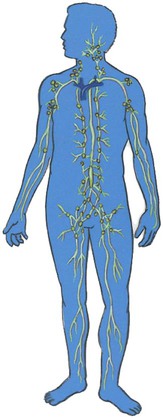
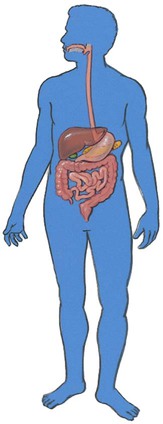
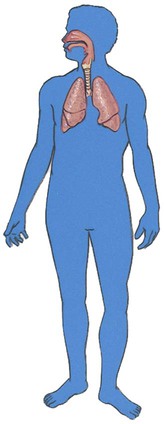
COMPONENTS: Lymph, lymph vessels, lymphoid organs
COMPONENTS: Mouth, esophagus, stomach, intestines, liver, pancreas
COMPONENTS: Air passageways, lungs
FUNCTIONS: Returns tissue fluid to the blood; defends against disease
FUNCTIONS: Ingests and digests food; absorbs nutrients into blood
FUNCTIONS: Exchanges gases between blood and external environment
Urinary System
Reproductive System
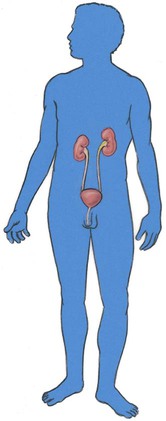
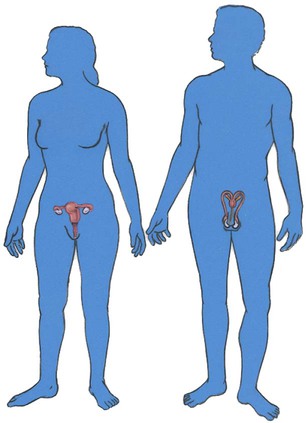
COMPONENTS: Kidneys, ureters, urinary bladder, urethra
COMPONENTS: Testes, ovaries, accessory structures
FUNCTIONS: Excretes metabolic wastes; regulates fluid balance and acid-base balance
FUNCTIONS: Forms new individuals to provide continuation of the human species
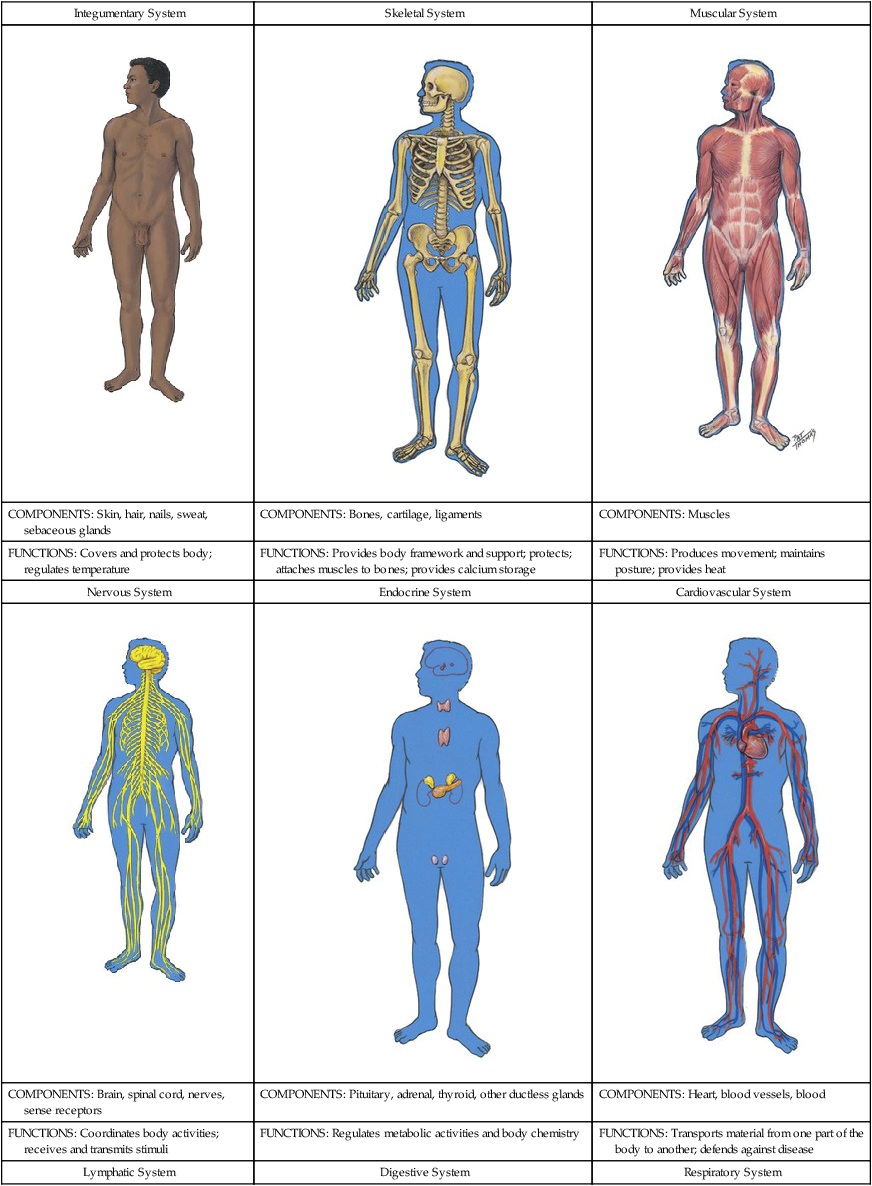

Anatomic Terms
Anatomic Position
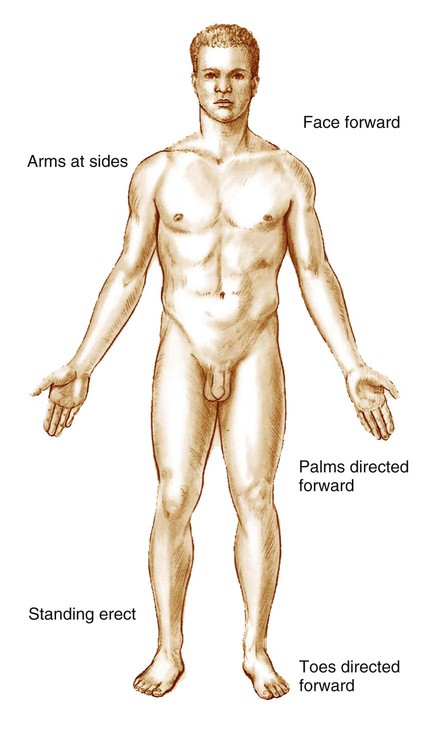
Directions in the Body
Planes and Sections of the Body
Body Cavities
Regions of the Body
Abdominal (ab-DAHM-ih-nal)
Portion of the trunk between the thorax and pelvis; celiac region
Antebrachial (an-te-BRAY-kee-al)
Region between the elbow and wrist; forearm; cubital region
Antecubital (an-te-KYOO-bih-tal)
Space in front of elbow
Axillary (AK-sih-lair-ee)
Armpit area
Brachial (BRAY-kee-al)
Arm; proximal portion of upper limb
Buccal (BUK-al)
Region of cheek
Buttock (BUT-tuck)
Posterior aspect of lower trunk; gluteal region
Carpal (KAR-pal)
Wrist
Celiac (SEE-lee-ak)
Abdomen
Cephalic (seh-FAL-ik)
Head
Cervical (SER-vih-kal)
Neck region
Costal (KAHS-tal)
Ribs
Cranial (KRAY-nee-al)
Skull
Crural (KROO-rahl)
Portion of lower extremity between knee and foot; leg
Cubital (KYOO-bih-tal)
Forearm; region between elbow and wrist; antebrachial
Cutaneous (kyoo-TAY-nee-us)
Skin
Femoral (FEM-or-al)
Thigh; part of lower extremity between hip and knee
Frontal (FRUN-tal)
Forehead
Gluteal (GLOO-tee-al)
Buttock region
Groin (GROYN)
Depressed region between abdomen and thigh; inguinal
Inguinal (IN-gwih-nal)
Depressed region between abdomen and thigh; groin
Leg (LEG)
Portion of lower extremity between knee and foot; also called crural region
Lumbar (LUM-bar)
Region of lower back and side between lowest rib and pelvis
Mammary (MAM-ah-ree)
Pertaining to the breast
Navel (NAY-vel)
Middle region of abdomen; umbilical region
Occipital (ahk-SIP-ih-tal)
Lower portion of the back of the head
Ophthalmic (off-THAL-mik)
Pertaining to the eyes
Oral (OH-ral) or (AW-ral)
Pertaining to the mouth
Otic (OH-tik)
Ears
Palmar (PAWL-mar)
Palm of hand
Pectoral (PEK-toh-ral)
Chest region
Pedal (PED-al)
Foot
Pelvic (PEL-vik)
Inferior region of abdominopelvic cavity
Perineal (pair-ih-NEE-al)
Region between anus and pubic symphysis; includes region of external reproductive organs
Plantar (PLAN-tar)
Sole of foot
Popliteal (pop-LIT-ee-al or pop-lih-TEE-al)
Area behind knee
Sacral (SAY-kral)
Posterior region between hip bones
Sternal (STIR-nal)
Anterior midline of the thorax
Tarsal (TAHR-sal)
Ankle and instep of foot
Thigh (THIGH)
Part of lower extremity between hip and knee; femoral region
Thoracic (tho-RAS-ik)
Chest; part of trunk inferior to neck and superior to diaphragm
Umbilical (um-BIL-ih-kal)
Navel; middle region of abdomen
Vertebral (ver-TEE-bral or VER-teh-bral)
Pertaining to spinal column; backbone
![]()
Stay updated, free articles. Join our Telegram channel

Full access? Get Clinical Tree




